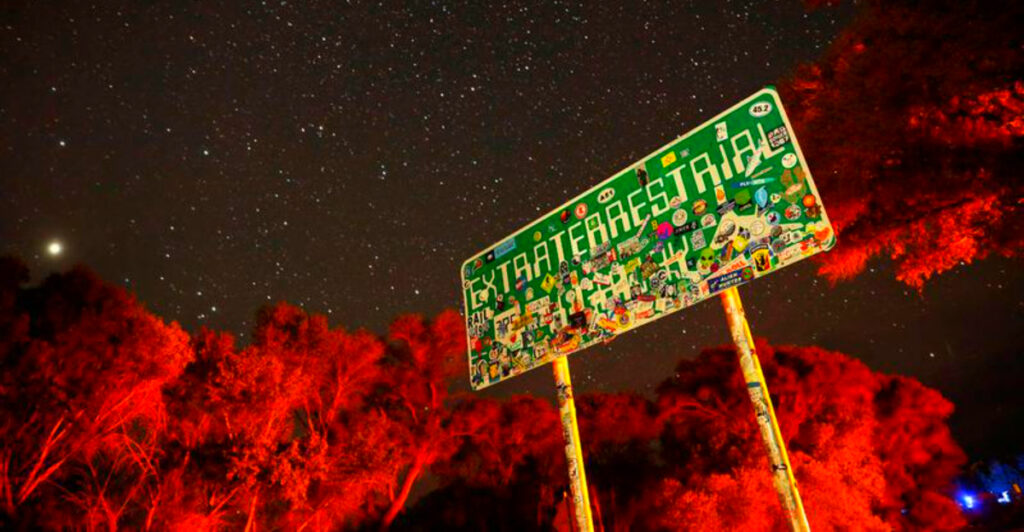Nestled along Nevada’s dusty ‘Extraterrestrial Highway’ sits a town where UFOs aren’t just possible—they’re practically expected. Rachel, Nevada, with its tiny population of just 48 residents, has transformed itself into America’s unofficial alien capital. What makes this remote desert community so convinced that the truth is out there?
The Shadow of Area 51
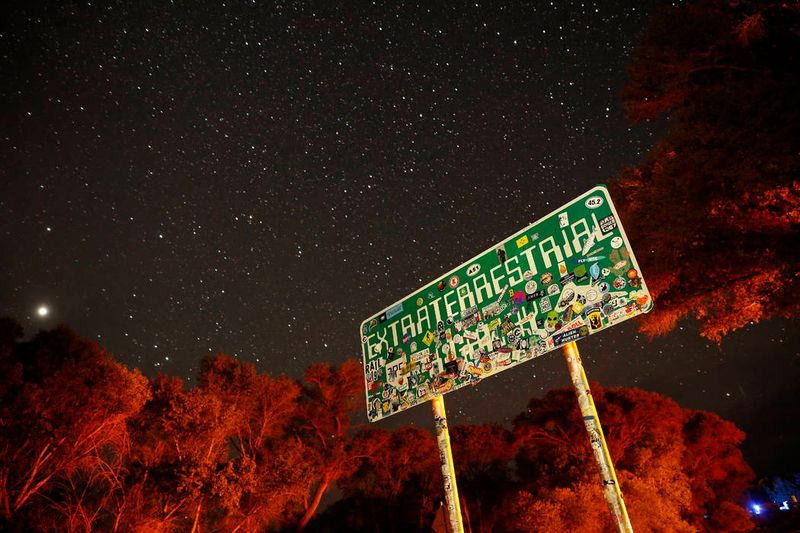
Just a stone’s throw from the most secretive military installation in America, Rachel thrives in Area 51’s mysterious glow. The base’s classified aircraft testing and government secrecy created the perfect breeding ground for extraterrestrial theories.
Locals routinely spot strange lights dancing across night skies. Are they experimental aircraft or something more otherworldly? The government’s longtime refusal to acknowledge Area 51’s existence only fueled wilder theories.
Rachel’s proximity to this enigmatic facility transformed it from a forgotten mining outpost to a pilgrimage site for UFO enthusiasts. Visitors arrive hoping to glimpse something unexplainable on the horizon. The town embraces its role as gatekeeper to America’s most famous ‘alien’ hotspot, with residents happily sharing their own strange sighting stories.
The Little A’Le’Inn: Cosmic Hospitality
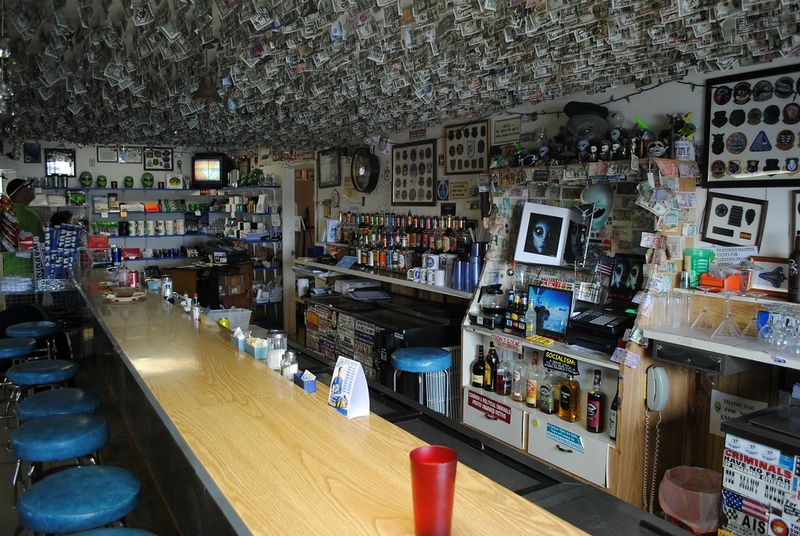
The heart of Rachel’s alien culture beats inside an unassuming roadside establishment with an otherworldly name. The Little A’Le’Inn (pronounced “alien”) began as a happy accident—a printer’s typo that became the perfect marketing hook.
Inside, the walls display hundreds of UFO photographs submitted by visitors claiming close encounters. Ceiling beams sag under the weight of baseball caps left by travelers from around the world. The diner serves “Alien Burgers” while guests can stay overnight in rooms with cosmic themes.
More than just a novelty stop, the A’Le’Inn functions as Rachel’s community center. It’s where UFO researchers share findings, skeptics become believers, and everyone exchanges theories about what really happens behind Area 51’s gates. Owner Pat Travis has become the unofficial ambassador of Rachel’s extraterrestrial identity.
The ‘Storm Area 51’ Phenomenon
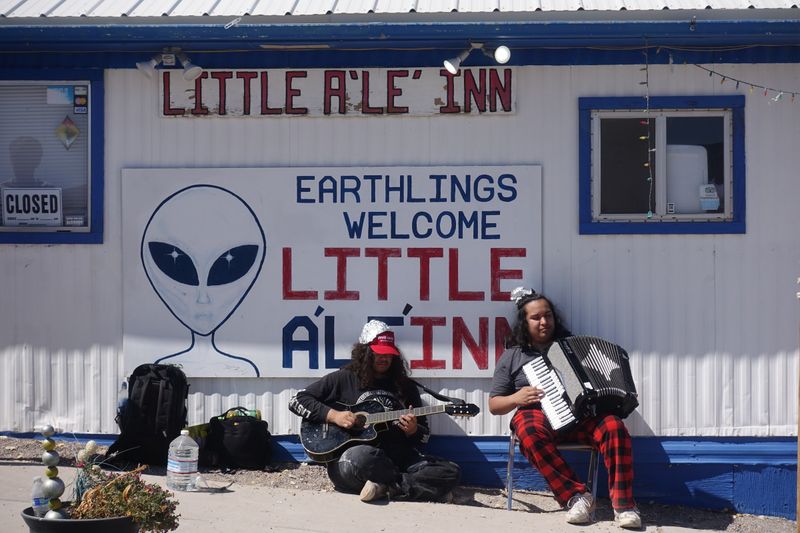
September 2019 marked a turning point when an internet joke spiraled into a viral sensation. What began as a Facebook event titled “Storm Area 51, They Can’t Stop All of Us” transformed Rachel overnight. Suddenly, this tiny town prepared for potential invasion by millions of curious UFO hunters.
While the feared crowds never fully materialized, thousands did arrive for what became “Alienstock.” The impromptu festival cemented Rachel’s place in pop culture. Residents watched in amazement as their remote community appeared on international news broadcasts.
The event revealed something profound about Rachel’s appeal—its existence as a physical gathering place for a community typically confined to internet forums. For many attendees, visiting Rachel wasn’t about actually raiding a military base but about connecting with fellow believers in the possibility of extraterrestrial life.
Alien Economies in the Desert
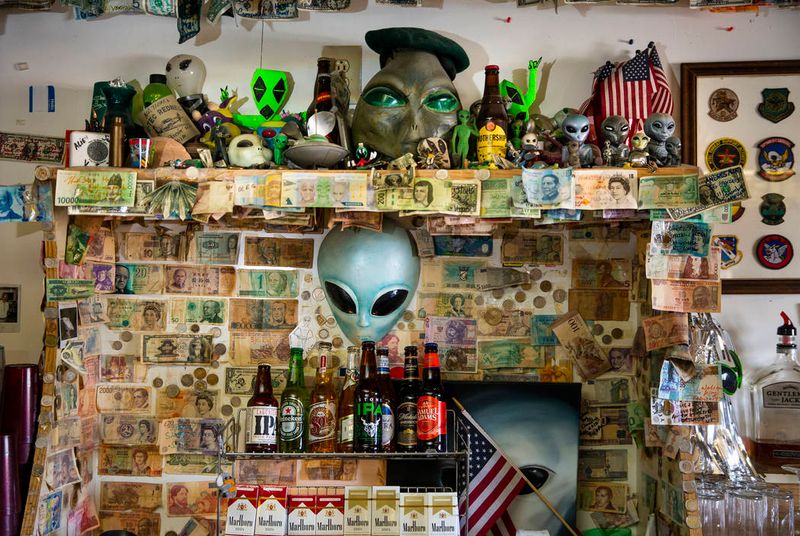
Rachel demonstrates how extraterrestrial enthusiasm transforms economic realities. In a region where mining jobs disappeared decades ago, alien tourism created sustainable livelihoods where none seemed possible. Every UFO hunter needs somewhere to eat, sleep, and buy memorabilia.
Residents capitalized brilliantly on their cosmic reputation. Handcrafted alien souvenirs command premium prices from travelers eager for authentic Area 51 mementos. The town’s remote location—normally a business disadvantage—becomes its greatest asset, offering an authentic experience for those seeking the unexplained.
Similar economic transformations happened in Roswell, New Mexico after its famous 1947 incident. These communities discovered that alien obsession translates into real dollars. Rachel’s residents may smile knowingly when asked if they truly believe in aliens, understanding that sometimes, belief itself is valuable currency in a town where the mysterious meets marketable.
The Government’s Unintentional Role
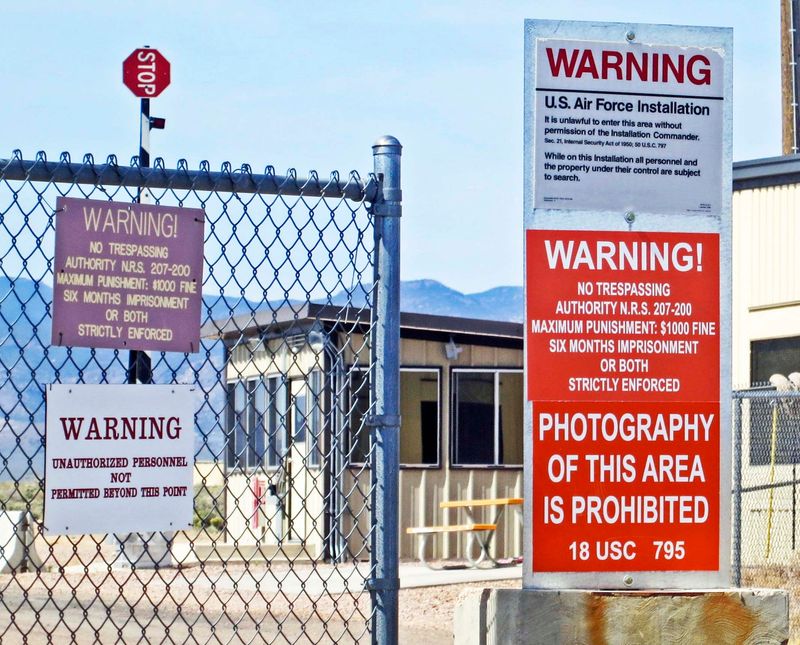
Nothing fuels conspiracy theories quite like official denial. For decades, the U.S. government refused to acknowledge Area 51’s existence, creating the perfect environment for Rachel’s alien narratives to flourish.
Military personnel patrolling the base perimeter in unmarked vehicles became known as “cammo dudes.” Their presence and the stern warning signs threatening photographers with arrest only heightened public fascination. Occasional government slip-ups, like a 2013 CIA document finally acknowledging the base, came too late to dampen established theories.
Rachel residents developed a complicated relationship with these government representatives—part adversaries, part unwitting business partners. Every new security measure or denial becomes fresh evidence in the town’s extraterrestrial narrative. The government’s secretive approach transformed a routine testing facility into the centerpiece of America’s most enduring alien mythology, with Rachel perfectly positioned to capitalize on this official mystery.
The Science Behind the Sightings
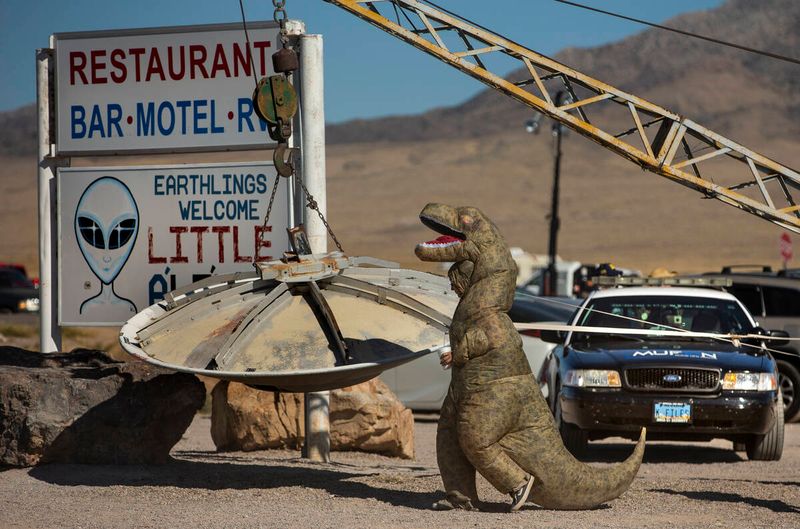
Rachel sits in a perfect storm of conditions that generate UFO reports. The military routinely tests experimental aircraft in the vast desert airspace, creating lights and movements defying conventional explanation. The clear desert air allows visibility for hundreds of miles, making distant objects appear closer and more mysterious.
Atmospheric conditions in Nevada’s high desert create mirages and light distortions. The stark landscape lacks reference points, making it difficult to judge the size, speed, or distance of aerial phenomena. Scientists note that Rachel’s isolation means minimal light pollution, revealing celestial objects often invisible elsewhere.
Rachel’s residents have become amateur experts in distinguishing military tests from natural phenomena. They understand the psychology of perception—how the human mind fills gaps in understanding with explanations matching expectations. Yet many maintain that even accounting for these factors, unexplainable sightings persist, keeping the extraterrestrial possibility tantalizingly alive.
Community Identity Through Cosmic Connection
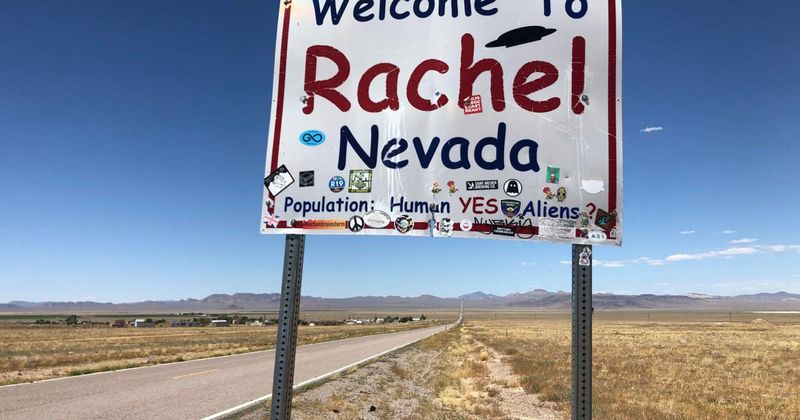
Rachel transformed potential ridicule into proud identity. What began as outsider fascination evolved into genuine community character. Children grow up discussing UFOs as casually as weather patterns, incorporating extraterrestrial possibilities into their worldview.
The alien theme provides social cohesion in an isolated environment. Annual gatherings like UFO conventions bring excitement to this remote outpost. Residents who might otherwise have little in common bond through their shared experience of living in America’s most famous alien-watching community.
Beyond economic benefits, Rachel’s cosmic connection offers something more valuable—significance. In a vast desert where towns regularly become ghost towns, Rachel found purpose as keeper of extraterrestrial possibilities. Whether or not aliens actually visit Nevada’s skies, the belief has kept this tiny community not just surviving but thriving, proving that sometimes the most powerful force isn’t what might exist beyond our atmosphere, but what we choose to believe about it.

